Wind power is one of the most established renewable power resources yet it is also one of the most volatile resources. This poses a key challenge for successfully integrating wind power at a large scale into the power grid. Here we present an analysis of the time scales associated with wind power from hourly to seasonal fluctuations and how combining spatially distributed wind power sources helps to reduce its volatility. The analysis, based on observed wind speeds, is then generalised in a simple statistical model to develop a tool which can estimate the power output profile from a particular consortium of wind power sources. As the estimator only uses the local, or the mean national, wind resource and the mean distance between the sites to estimate the joint power output profile, it can be used by developers to estimate the reliability of their joint power output and to form the most effective consortium.
1.
Introduction
The aim of this short paper is to understand at which extent the incompressible equations can be considered as a significant approximation of the 3D Euler equations. The role of this approximation (and related viscous ones) has been extensively studied in the space periodic case by Cao, Lunasin and Titi [13], Larios [19], Larios and Titi [20,21]. Here, we consider a problem which contains the additional technical difficulties of the boundary and which is physically relevant. To this end we consider, for $\alpha>0$, the following Euler–Voigt system of partial differential equations:
in the bounded domain $\Omega\subset{\bf{R}}^3$, with smooth boundary $\Gamma$, where the vector field $\boldsymbol{u}:\, \Omega\to{\bf{R}}^3$ is the velocity, while the scalar $p:\, \Omega\to{\bf{R}}$ is the pressure. We recall that $\alpha>0$ is a parameter having the dimensions of a length and, when the system is used in Large Eddy Simulations, it can be related to the smallest resolved scale, see [9]. (We recall also the recent result in a bounded domain from Busuioc, Iftimie, Lopes Filho, and Nussenzveig Lopes [12] for the different –but related– $\alpha$-Euler system.)
To model the motion of a turbulent flow in a bounded domain, we investigate here about this system in presence of suitable boundary conditions. The main point is that we want to understand whether it is possible to supplement the Euler–Voigt equations with boundary conditions in such a way to have uniqueness of weak solutions (for arbitrary positive and negative times) and — even with more relevance — consistency with the solution of the incompressible Euler equations starting with the same data, that is with the smooth solutions to
We recall that the Euler equations are naturally supplemented with the (slip) impenetrability condition
where $\boldsymbol{n}$ is the external unit normal to the boundary, and consequently it is natural to supplement also the Euler–Voigt equations (1.1) with the same impenetrability boundary condition. In the case of the Euler–Voigt (which is not a first order system of partial differential equations) one single condition is not enough to determine uniquely the solution $\boldsymbol{u}$.
The issue of the boundary conditions to be used to supplement the Euler–Voigt equations has been raised especially in Larios [19], with many intuitions and investigations on related equations, but without a simple and definitive answer.
Here, we investigate from the analytical point of view a reasonable set of boundary conditions which makes the equations well-posed, showing three main results: a unique weak solution exists globally in time; there is not an increase or decrease in the available regularity; the solution $\boldsymbol{u}$ converges, as $\alpha\to0$, to the smooth solution $\boldsymbol{u}^E$ of the 3D Euler equations (in its interval of existence). To give a further support to our investigations we also recall that the equations have been introduced and studied in [13,19,20,21] in the context of Large Eddy Simulations and turbulence models, showing that they have good stability and approximation properties, in the space-periodic case, even if Voigt models are much older and known in the theory of visco-elastic fluids, see Oskolkov [25]. One very relevant feature, which is important to interpret Voigt models as tools for turbulent flows, is that the Voigt regularization is very stable and appealing from both the numerical and theoretical point of view, see for instance the recent computations in Larios, Wingate, Petersen, and Titi [22], where the model is used to investigate the finite-time blow up of the 3D Euler equations.
The relevance of the Voigt model is specially emphasized also in the context of viscous problems, that is when considering the so called Navier–Stokes–Voigt equations
with a viscosity $\nu>0$. These latter equations represent a viscous approximation which can be treated also in presence of boundaries, still with the Dirichlet conditions. Later, the structural stability and sharp convergence results as both $\alpha, \, \nu\to0$ have been proved in [8] in the space-periodic setting. See also the connections with the Bardina model and with the work in Layton and Lewandowski [24].
The full system that we propose here as a "reasonable" boundary-initial-value-problem is given by the 3D equations supplemented with Navier (slip-with-friction) boundary conditions:
where $\beta\geq 0$ is a parameter representing possible friction forces at the boundary, the subscript "tan" denotes the tangential component to the boundary. The boundary condition (1.6) means that $[{(\boldsymbol{n} \cdot\nabla) \boldsymbol{u}
+\beta\, \boldsymbol{u}}]\cdot\mathit{\boldsymbol{\tau }} = 0$ on $\Gamma$, for every vector $\mathit{\boldsymbol{\tau }}$ tangential to the boundary $\Gamma$. We assume that $\boldsymbol{u}_0$ satisfies (1.4)–(1.6) (considered at time $t = 0$). These boundary conditions have been introduced for the Navier–Stokes equations by Navier himself, and they are widely used in turbulence modeling, see [10,15,17,23,26]. Since the Euler–Voigt system can be considered a special large scale method for the simulation of turbulent flows, adopting the Navier condition seems particularly sound.
The presence of the sets of boundary conditions is justified by the order of the partial differential equation (1.3), which in the case with viscosity can be considered as a pseudo-parabolic system [14,Ch. 3], even if in our case it is something which can be classified as pseudo-hyperbolic. Actually, when considering the Navier boundary conditions, the boundary condition (1.6) is generally replaced by
where $\boldsymbol{D}\boldsymbol{u}$ denotes the deformation tensor field, of components $D_{ij}=(\partial_i u_j+\partial_j u_i)/2$. We will present our results assuming the condition (1.6), but we will show the little modifications needed to apply the same arguments when (1.8) holds.
We also observe that taking a partial derivative with respect to time, we deduce that the boundary conditions (1.5)–(1.6) and (1.8) also hold for $\partial _t \boldsymbol{u}$, and clearly we have as well $\nabla\cdot \partial _t\boldsymbol{u} = 0$ on the whole space-time.
The Navier boundary conditions recently attracted interest also for their analytical properties, see for instance the work in [1,2,3,4,27]. The role of the Navier boundary conditions in singular limits is studied in [5,6,18,30,31] and further information can also be found in the review paper [7].
We will use the standard Sobolev spaces $W^{k, p}(\Omega)$ and $H^k(\Omega) = W^{k, 2}(\Omega)$ and, in order to properly define the notion of weak solution and to state our results, we introduce the following function spaces (which are typical of the Navier–Stokes equations with Navier condition, see Beirão da Veiga [2])
and denote by $ V'$ the topological dual space to $ V$. We denote by $\|\, .\, \|$ the $L^2(\Omega)$-norm and by $\|\, .\, \|_\Gamma$ the $L^2(\Gamma)$ one, while $\| \, .\,
\|_{V}$ coincides with the $H^1_0(\Omega)$-norm. We define a regular weak solution as follows:
Definition 1.1. We say that $\boldsymbol{u}: \left[{- T, T} \right]\times\Omega \rightarrow {\mathbb{R}}^3$ is a regular weak solution of (1.3)–(1.7) in the time interval $\left[{- T, T} \right]$ if $\boldsymbol{u}\in\mathscr{C}^1({\left[{- T, T} \right]; V})$ is such that
for every $t\in\left[{- T, T} \right]$ and for every $\mathit{\boldsymbol{\varphi }}\in V$, and if the initial condition (1.7), with $\boldsymbol{u}_0\in V$, holds in classical sense.
Notice that if $\mathsf{A, B}$ are second order tensors, we set $\mathsf{A : B}: = \sum_{i, j} \mathsf{A}_{i j} \mathsf{B}_{i j}$.
Remark 1.2. When the boundary condition (1.6) is replaced by (1.8), the weak formulation becomes
since $2{\rm{div}} \boldsymbol{D}\boldsymbol{u} = \Delta \boldsymbol{u}$, thanks to $\nabla\cdot\boldsymbol{u} = 0$.
In both cases, the weak formulation is formally obtained by testing the equation (1.3) against $\mathit{\boldsymbol{\varphi }}$, integrating by parts, and using the properties described in Lemma 2.1 below.
We have the following two results, which are the counterpart of those proved in the periodic setting in [13].
Theorem 1.3 (Short-time existence and uniqueness). If $\boldsymbol{u}_0\in V$, then there exists a time $T^* = T^*(||\boldsymbol{u}_0||_V)>0$ such that the problem (1.3)–(1.7) admits a unique regular weak solution in the time interval $\left[{- {T^*}, {T^*}} \right]$.
This result is proved by a contraction principle and this explains the small time-interval in the statement. On the other hand, by a continuation principle it turns out that the interval of existence is infinite and the following result holds true.
Theorem 1.4 (Long-time existence). If $\boldsymbol{u}_0\in V$ then, for any fixed $T>0$, there exists a unique regular weak solution of the problem (1.3)–(1.7) in the time interval $\left[{- T, T} \right]$.
By uniqueness, we obtain a unique solution defined on the whole real line. Moreover, the energy (of the model) identity
holds for every $t\in\; ] - \infty, \infty [$.
In addition, if the data are more regular, also the solution is more regular. Contrary to parabolic problems, there is not an instantaneous gain in regularity. For instance, the solution will not belong to $H^2(\Omega)$, for $t\not = 0$. On the other hand, an extra assumption about the summability of $\boldsymbol{u}_0$ (for a critical exponent) reflects in a gain of regularity for $\boldsymbol{u}$ itself or, more precisely, for $\boldsymbol{u}-\boldsymbol{u}_0$.
Theorem 1.5 (Extra regularity). Assume that $\boldsymbol{u}_0\in V\cap {\rm{W}}^{2, 4/3}(\Omega)^3$ is such that $ [{({\boldsymbol{n}}\cdot \nabla)\, \boldsymbol{u}_0 +\beta\, \boldsymbol{u}_0}]_{\rm tan} = {\bf{0}}$ and denote by $\boldsymbol{u}$ the unique regular weak solution of (1.3)–(1.7) in the time interval $\left[{- T, T} \right]$. If we define $\boldsymbol{v}: = \boldsymbol{u}-\boldsymbol{u}_0$, then we have $\boldsymbol{v}\in\mathscr{C}^0 ({\left[{- T, T} \right]; V\cap {\rm{H}}^2(\Omega)^3})$.
Further comments on the regularity are also stated in Section 2.3.
The last (and probably the most important) result is that of convergence toward solutions to the Euler equations. Assume now, in addition, that $\boldsymbol{u}_0\in V\cap {\rm{H}}^3(\Omega)^3$ and denote (for $0 < \overline{T}\leq T$) by ${\boldsymbol{u}^{\rm{e}}}\in \mathscr{C}^0({\left[{- \bar T, \bar T} \right]; H\cap{\rm{H}}^3(\Omega)^3})\cap \mathscr{C}^1({\left[{- \bar T, \bar T} \right]; H\cap {\rm{H}}^2(\Omega)^3})$ the unique solution (see Bourguignon and Brezis [11], and Temam [28]) of the incompressible Euler system with initial datum $\boldsymbol{u}_0$:
Recall that a lower bound on $\overline{T}$ can be obtained in terms of $\|\boldsymbol{u}_0\|_{{\rm{H}}^3}$. Denote then by ${\boldsymbol{u}^{\alpha} }$ the solution of (1.3)–(1.7) (whose existence and uniqueness come from Theorem 1.4) corresponding to the same $\boldsymbol{u}_0$ with a given $\alpha>0$. The following theorem shows the absence of the first boundary layer.
Theorem 1.6 (Absence of the first boundary layer). Let $\boldsymbol{u}_0\in V\cap {\rm{H}}^3(\Omega)^3$, and let ${\boldsymbol{u}^{\alpha} }$ and ${\boldsymbol{u}^{\rm{e}}}$, with ${\boldsymbol{u}^{\alpha} }\in \mathscr{C}^1({\left[{- \bar T, \bar T} \right]; V})$ and ${\boldsymbol{u}^{\rm{e}}}\in\mathscr{C}^0({\left[{- \bar T, \bar T} \right]; H\cap{\rm{H}}^3(\Omega)^3})\cap \mathscr{C}^1({\left[{- \bar T, \bar T} \right]; H\cap {\rm{H}}^2(\Omega)^3})$, denote the unique solutions of the systems (1.3)–(1.7)
and (1.9)–(1.12), respectively.
Then, it holds
where $||\cdot||_{\mathscr{C}^0 {\rm{L}}^2}$ denotes the standard norm of the space $\mathscr{C}^0({\left[{- \bar T, \bar T} \right]; {\rm{L}}^2(\Omega)^3})$.
2.
Existence and regularity
In this section, we prove the basic existence and regularity results, while the study of the limit $\alpha\to0$ is postponed to the last section.
Before going on, we recall some useful identities which are used in this section and in the following, cf. [2,29]. The subsequent lemma holds for any vector field $\boldsymbol{u}, \boldsymbol{v}, \boldsymbol{w}$ and any scalar field $p$ satisfying the stated hypotheses (in particular, we do not require that $(\boldsymbol{u}, p)$ is a solution of the Euler–Voigt or Euler system).
Lemma 2.1. (a) Let $\boldsymbol{u}, \boldsymbol{v}, \boldsymbol{w}\in V$, then
and in particular
Moreover, if $p\in H^1(\Omega)$ and $\boldsymbol{u}\in V$, then $\int_\Omega \nabla p \cdot \boldsymbol{u} \, {\rm{d}}\boldsymbol{x} = 0$.
(b) If $\boldsymbol{u}, \boldsymbol{v}\in V\cap H^2(\Omega)^3$ are such that $
[{({\boldsymbol{n}}\cdot \nabla) \boldsymbol{u} +\beta\, \boldsymbol{u}}]_{\rm tan} = {\bf{0}}$ on $\Gamma$, where $\beta\in {\bf{R}}$, then
Remark 2.2. Formula (2.1) still holds when the boundary condition (1.6) is replaced by (1.8) .
2.1. Short-time existence and uniqueness
We introduce the orthogonal Leray projector $P : {\rm{L}}^2(\Omega)^3 \to H$ and project the bilinear term obtaining, as usual, $P[(\boldsymbol{u}\cdot\nabla)\, \boldsymbol{u}]$
(see [16,29]). The equation (1.3) can be rewritten as
or even as
which turns out to be a differential equation in the Banach space $V$.
The basic existence and regularity results for the steady Stokes problem with Navier conditions can be found in [2,4,27], showing for instance (and this is enough for our purposes) the $H^2$-regularity and the characterization of the domain of $A = -P\Delta$ as made by divergence-free functions in $H^2(\Omega)^3$, which satisfy (1.5)–(1.6).
Proof of Theorem 1.3. In order to show existence of weak solutions, we can formulate the problem as follows: find $\boldsymbol{u}\in\mathscr{C}^1({\left[{- T, T} \right]; V})$ such that
for every $\mathit{\boldsymbol{\varphi }}\in V$. Existence and uniqueness can be proved by a fixed point argument as done in [13] for the space periodic case. In particular, it is sufficient to show that the right-hand side of (2.2) is locally Lipschitz in the Hilbert space $V$. To this end let $\boldsymbol{u}_1, \boldsymbol{u}_2\in V$ and set $\boldsymbol{u}: = \boldsymbol{u}_1-\boldsymbol{u}_2$. We have
by the $H^2$ regularity of the Stokes operator, Lemma 2.1, the Hölder (${\rm{L}}^4$-${\rm{L}}^2$-${\rm{L}}^4$) inequality and the 3D Gagliardo–Nirenberg inequality $||\boldsymbol{u}||_{{\rm{L}}^4}\leq C||\boldsymbol{u}||_V$. In particular, we used the regularity result from [2,Thm. 1.1], applied to the system where to the second order differential operator $-\alpha^2\Delta$ is added a zeroth order term. The $L^2$-theory for the operator $u-\alpha^2\Delta$, with the divergence constraint and with Navier conditions, is the same as that considered in the reference [2], but with the simplification of the uniqueness in any smooth and bounded domain, due to the presence of the zeroth order term which forces the kernel to vanish, since the rigid motions are not allowed.
In order to prove the locally Lipschitz regularity, we may assume $||\boldsymbol{u}_1||_V+||\boldsymbol{u}_2||_V\leq C$, so the conclusion easily follows as in the cited references. Then, one can find a $T^*>0$ small enough such that the mapping $\boldsymbol{v}\mapsto\boldsymbol{u}$ defined by
is a strict contraction. This gives immediately existence and uniqueness.
We observe that for a function in $V$, the boundary condition (1.6) is not well-defined. On the other hand, our solution satisfies this in a proper weak sense, which is hidden in the weak formulation from Definition 1.1. The problems are exactly the same arising in the study of the Stokes problem with the same conditions, see discussion in [2]. Anyway, with the same machinery it is easy to show that if $\boldsymbol{u}_0\in V\cap H^2(\Omega)^2$ satisfies the boundary condition (1.6), then the unique weak solution belongs to $H^2(\Omega)^3$ for all times, and the boundary condition is satisfied in the usual trace sense.
2.2. Long-time existence
By using standard continuation arguments, one can show that the solution exists globally. To this end it is sufficient to show that $||\boldsymbol{u}||_V$ remains finite on the maximal time interval of existence. This can be easily obtained by an energy-type estimate. We test the equation (1.3) against $\boldsymbol{u}$, and this is completely justified as a duality pairing in $V'$. Hence, once we have a weak solution as in the previous theorem, we can perform calculations which are not formal, but completely justified.
Proof of Theorem 1.4. We test the equation (1.3) against $\boldsymbol{u}$; by using the identities provided by Lemma 2.1, we obtain the equality
and hence, integrating over $[0, t]\subset]-T^*, T^*[$ (or $[t, 0]$), we get
Since in (1.1) the friction term satisfies $\beta\geq0$, this estimate proves that $||\boldsymbol{u}(t)||_V$ remains bounded in any interval $\left[{- T, T} \right]$, only in terms of $\|\boldsymbol{u}_0\|_V$.
2.3. Further regularity
In this section we discuss the possible propagation of singularities for the equations. First, we recall that if we set $\boldsymbol{v}: = \boldsymbol{u}-\boldsymbol{u}_0$, then $\boldsymbol{v}\in \mathscr{C}^1 ({\left[{- T, T} \right]; V})$, $\partial _t\boldsymbol{v} = \partial _t\boldsymbol{u}$, and $\boldsymbol{v}(0) = {\bf{0}}$.
Proof of Theorem 1.5. We can write the equation satisfied by $\boldsymbol{v}$ as follows
Projecting on $H$ through $P$, we deduce
We test against $A\boldsymbol{v} = -P\Delta \boldsymbol{v}$. Note that this test is formal since, concerning the spatial regularity, we have that both the terms of the equation and the test functions belong to ${\rm{H}}^{-1}(\Omega)^3$.
Since $P$ is self-adjoint and commutes with time-differentiation, we obtain (see the case (b) in Lemma 2.1) the following identities
Hence, we deduce
We need to estimate four terms. We will resort to the 3D Sobolev embeddings
and the 3D Gagliardo–Nirenberg inequality
By exploiting the regularity of $\boldsymbol{v}$, especially that $\boldsymbol{v}\in {\rm{L}}^\infty(V)$, and the equivalence between the norms $||P\Delta\, \cdot\, ||$ and $||\Delta\, \cdot\, ||$ for functions belonging to the domain of the operator $A$, see [2], we have
Collecting these estimates and setting
we obtain $X'(t)\leq X(t)+M$. Integrating over $[0, t]$ (with $t$ possibly negative), we deduce $X(t)\leq M{\rm{e}}^T$, which shows that $\boldsymbol{v} \in {\rm{L}}^\infty({-T, T; V\cap {\rm{H}}^2(\Omega)^3})$. Here, we are exploiting again the equivalence between the norms $||P\Delta\cdot||$ and $||\Delta\cdot||$.
Now, testing (formally) the equation (2.3) against $A\, \partial _t \boldsymbol{v} = -P\Delta \partial _t \boldsymbol{v}$ and using the improved regularity of $\boldsymbol{v}$, which implies that $\boldsymbol{v} \in {\rm{L}}^\infty (-T, T; {\rm{W}}^{2, 4/3}(\Omega))$, we get (see (2.4)–(2.5))
Exploiting again the equivalence between $||P\Delta\cdot||$ and $||\Delta\cdot||$, and the previous estimate, we obtain $\partial _t\boldsymbol{v}
\in {\rm{L}}^\infty({-T, T; V\cap {\rm{H}}^2(\Omega)^3})$. In particular, we have both $\boldsymbol{v}, \partial _t\boldsymbol{v} \in {\rm{L}}^2({-T, T; V\cap {\rm{H}}^2(\Omega)^3})$; by interpolation, we conclude that $\boldsymbol{v} \in \mathscr{C}^0({-T, T; V\cap {\rm{H}}^2(\Omega)^3})$.
This result shows that, even if the regularity does not increase in terms of number of generalized derivatives, there is an increase in the summability exponent, from $4/3$ up to $2$. This is due to the fact that the regularization changes the nature of the equations, which are not anymore purely hyperbolic, with the Laplacian term acting on the time derivative.
3.
Absence of the first boundary layer
In this section we prove the main result of the paper, namely the convergence Theorem 1.6. The theorem itself is now an easy consequence of the previous theorems, but it gives the main justification for the use of the equations as a computational tool.
Proof. We set $\boldsymbol{u}: = {\boldsymbol{u}^{\rm{e}}}-{\boldsymbol{u}^{\alpha} }$ and write the equation satisfied by $\boldsymbol{u}$:
We notice that $\boldsymbol{u}$ satisfies (1.4) and (1.5), and test the previous equation against $\boldsymbol{u}$. Such a test is allowed, since $\boldsymbol{u}\in \mathscr{C}^1({\left[{- \bar T, \bar T} \right]; V})$ and all terms in the equation live at least in $\mathscr{C}^0([\big]{\left[{- \bar T, \bar T} \right]; V'})$.
We obtain (see the case (b) in Lemma 2.1)
which can be recast as $U'(t)\leq K U(t)+B\, \alpha^2$, where $K: = 2C>0$, $B: = 2C(1+\beta)>0$ and
(since ${\boldsymbol{u}^{\rm{e}}}(0) = {\boldsymbol{u}^{\alpha} }(0) = \boldsymbol{u}_0$). Integrating (or using the Gronwall inequality), we deduce $U(t)\leq \alpha^2 BK^{-1}{\rm{e}}^{Kt} \leq \alpha^2 BK^{-1}{\rm{e}}^{K\overline{T}}$. Letting $\alpha\to 0$ and recalling the definition of $U(t)$, we finally get the claim.
4.
Conclusions
We showed in a simple and elementary way that the Euler–Voigt system, for which there exists a unique global solution, even with initial datum in $V$, can be considered as a reasonable approximation of the Euler system. This holds because solutions of the former converge to solutions of the latter as the parameter $\alpha\to0$, even in presence of boundaries.
5.
Acknowledgments
The research that led to the present paper was partially supported by a grant of the group GNAMPA of INdAM.
Conflict of interest
The authors declare no conflicts of interest in this paper.











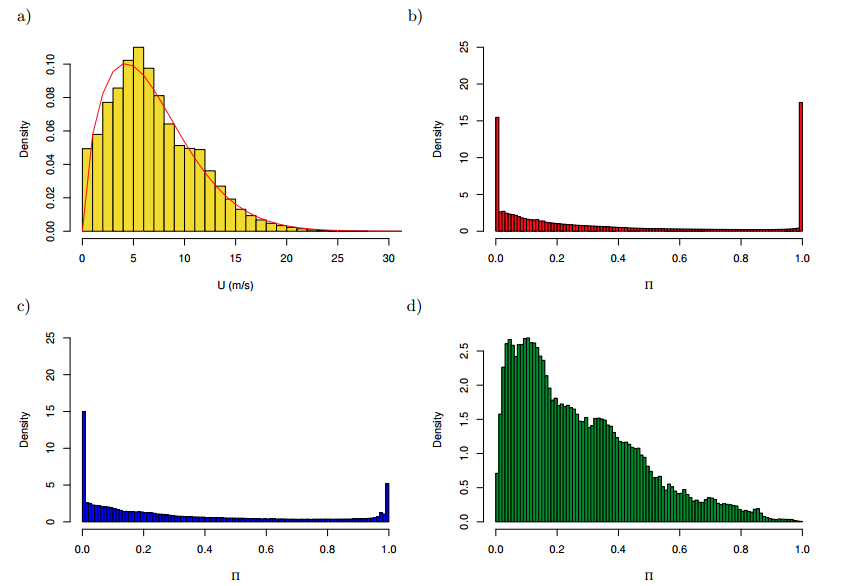
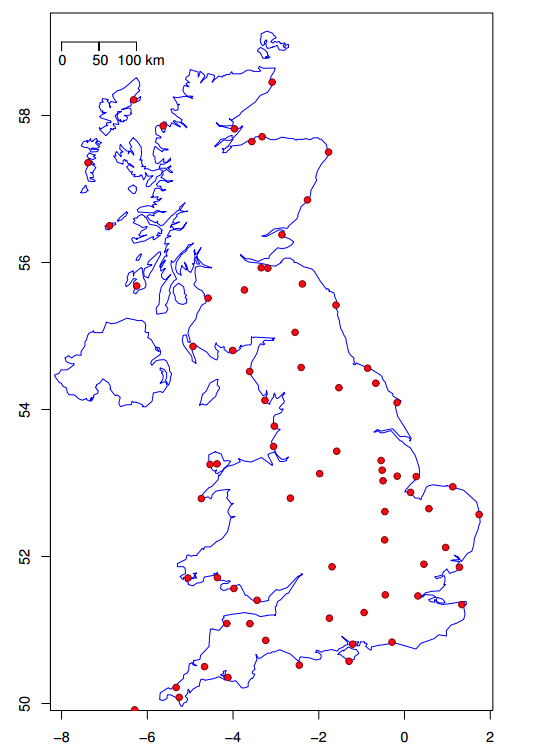
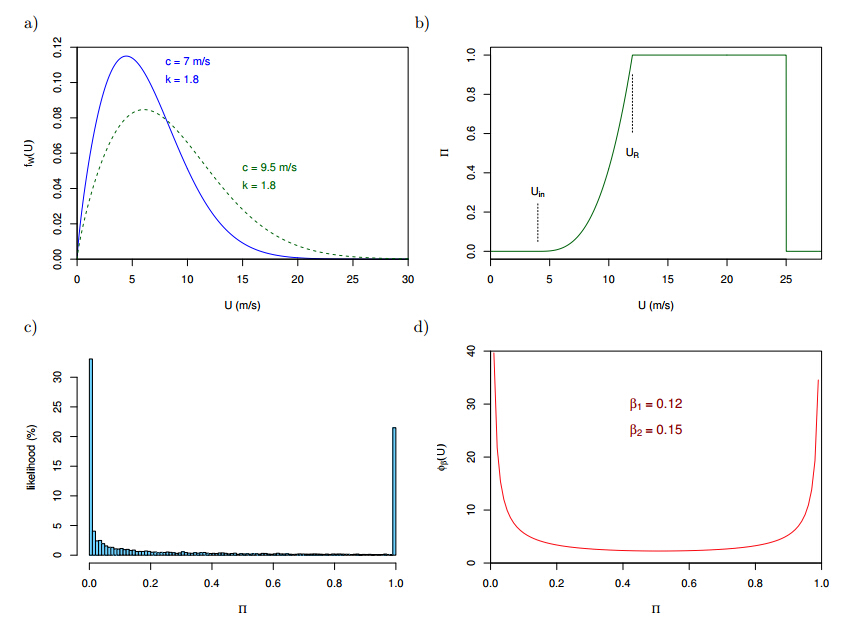
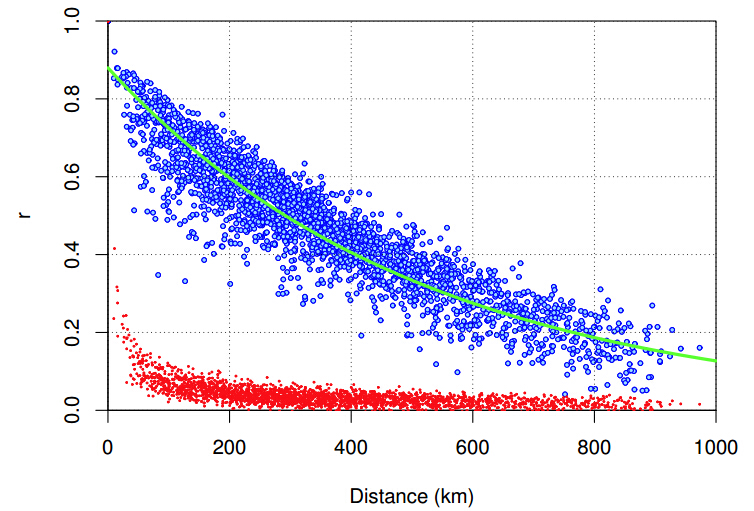


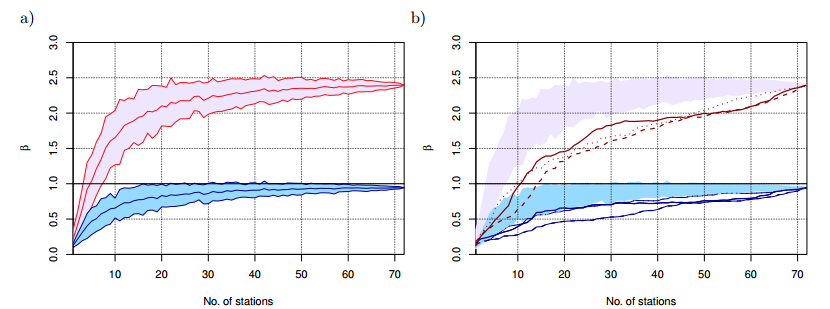
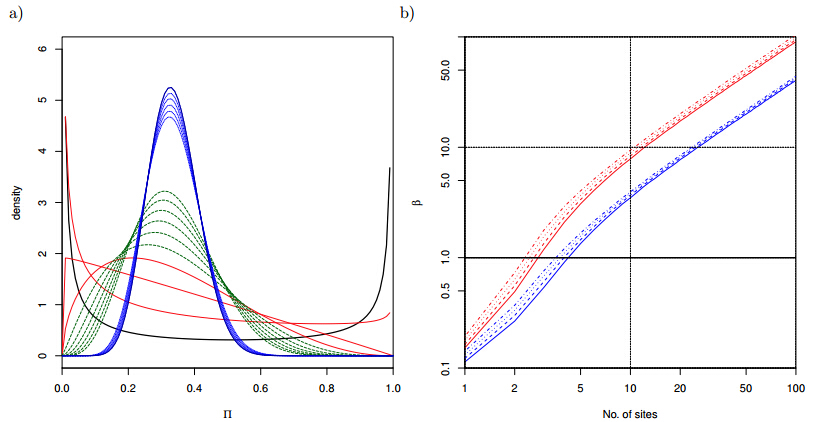
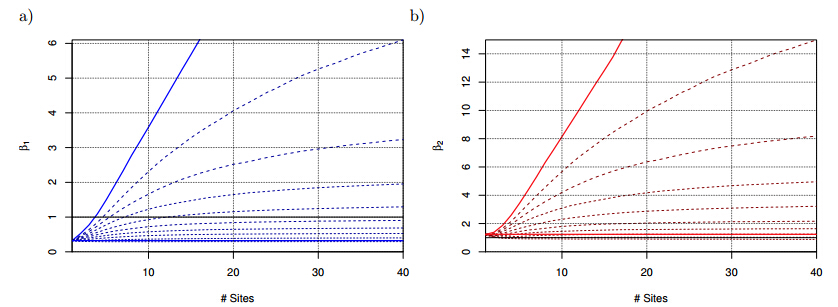

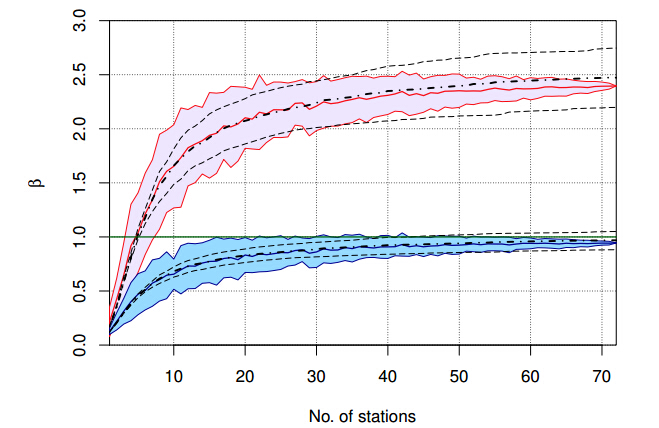
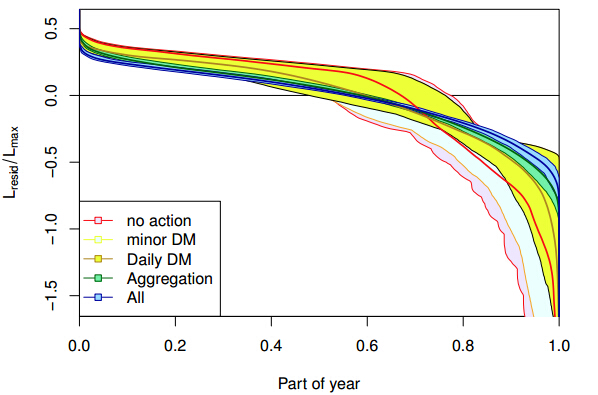
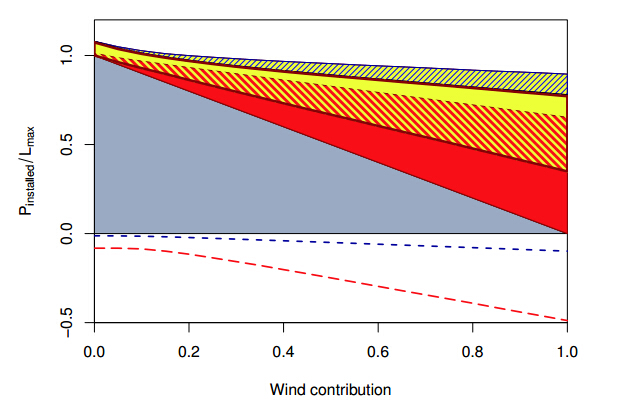


 DownLoad:
DownLoad: